Life Jackets are for Everyone
A life jacket (or Personal Flotation Device - PFD) is the single most important piece of equipment on your boat and the most important consideration should be size. More than two-thirds of all boating fatalities are drowning incidents and 90% of drowning victims were not wearing a life jacket. So buy a life jacket that you will wear ... it could save your life.
There several types of traditional foam flotation devices as well as new inflatable life jackets. Each is designed for different boating activities and water conditions and each has its own maximum buoyancy, performance level, and limitations. You should choose your life jacket based on your boating activities and conditions. Life jackets must be U.S. Coast Guard-approved in order to meet carriage requirements.
The Requirements for Life Jackets
There must be a properly fitting life jacket for each and every person aboard a recreational vessel. Life jackets must be Coast Guard-approved, in serviceable condition and the appropriate size for the intended user. Obviously, they are most effective when worn. On a vessel underway, children under 13 must wear an appropriate Coast Guard-approved PFD, unless they are below decks or in an enclosed cabin. Within the geographic boundaries of any State that has established a child PFD wear requirement, that State’s requirement will be adopted. Our Life Jacket Loaner Program for kids can help you get the right life jacket for the day or weekend. To find the loaner site nearest you, use our convenient map.
Each state may have additional wear requirements, such as for water skiing, personal watercraft operation, white water boating activities and during certain cool-weather months. Additionally, a boat 16’ in length or greater, except canoes and kayaks must have a throwable flotation device. See specific state requirements for life jackets.
Read More About This Topic
- How to Care for Your Life Jackets
- Inflatable Life Jacket Care Infographic
New Life Jacket Labels and Icons – What do they Mean?
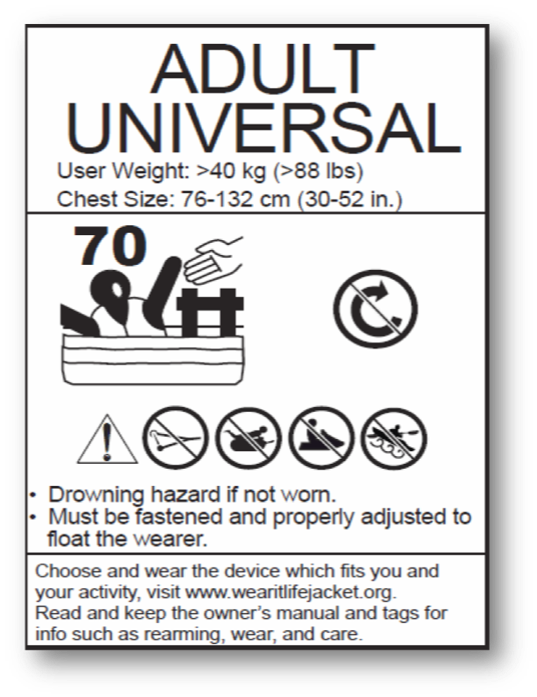
If you haven’t already seen them, soon you will notice certain life jackets have a new style of label on the inside. Eventually, all new life jackets which are Coast Guard approved and available for purchase in the United States will have these new labels. It is part of an effort to make selecting the right life jacket for you and your intended on-water activity, easier. This new labeling process is also referred to as life jacket label harmonization, which is an effort to make them more universally understood and accepted, especially in Canada and Europe. The goal was to simplify the labels, with less writing and more icons.
Top 10 Features and Goals of the New Life Jacket Labels
- Performance summary graphic
- Activity appropriateness icons
- Legal requirements specified
- Reduce language barriers
- More universal acceptance
- Harmony with other countries
- Approval status clearly noted
- Third party testing verification
- Manufacturer contact information
- Care and cleaning instructions
In general, the intent of the new labels is to help users select and care for the appropriate life jacket for the activity in which they are participating. The labels have fewer words more easily understood icons.
What About the Old Labels and Life Jackets?
In 2014, the U.S. Coast Guard removed the “Type” codes from the Code of Federal Regulations. As you may recall, life jackets and personal flotation devices had been referred to as Type I, II, III, IV and V, each of which corresponded to a certain performance or designated use. Going forward, these devices will be referred to as either “throwable” or “wearable” and have a performance category indicated by an icon.
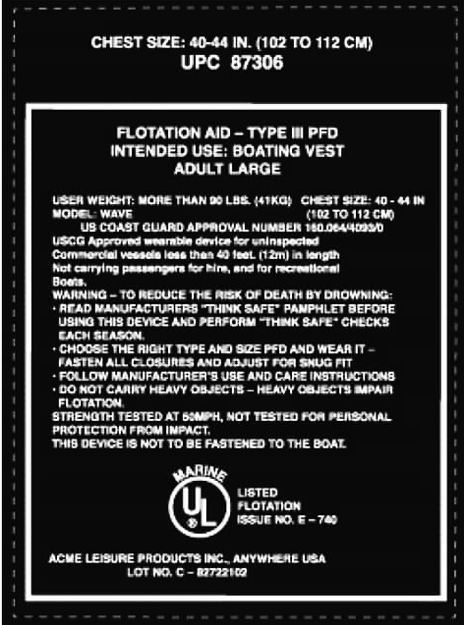
New life jackets that are brought to the market will feature these new labels. However, it will take many years for the older style labels to be completely phased out and you are likely to see both styles in stores, on boats and in use for many years to come. Any life jacket will the old style label that is still serviceable and in overall good shape, as long as it’s Coast Guard approved, will continue to meet regulatory requirements.
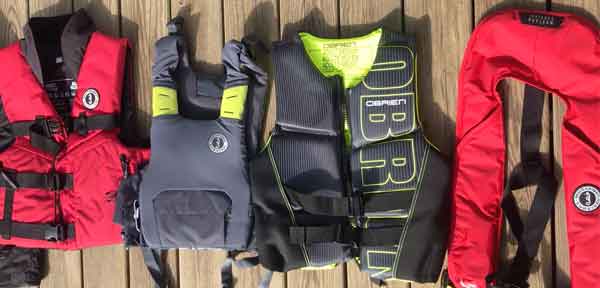
Take the Time Understand the New Label
Selecting a proper life jacket and wearing it is the best thing a boater can do to ensure a safe and enjoyable day on the water. A hang tag with important information will accompany each new life jacket. If shopping in a store, be sure you leaf through this hang tag or ask a store associate if you have any questions. If shopping online, read the full product description and reviews to ensure you’re purchasing the right life jacket for you.
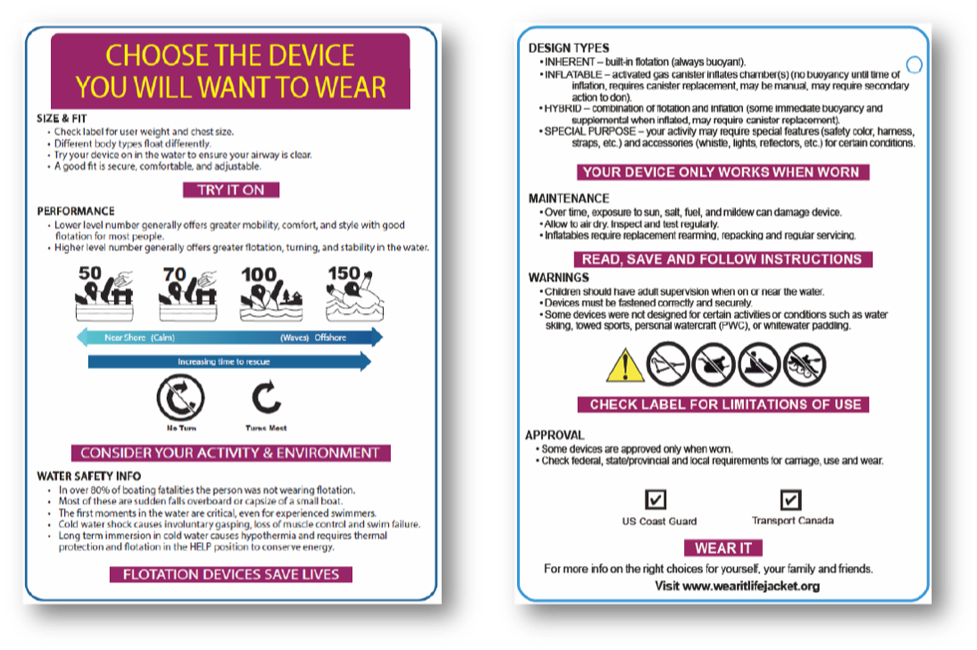
New life jackets feature information in four main categories, usually in separate boxes. At the top of the label, usually toward the neck, is sizing information. The sizing usually specifies a user weight range and chest size range. Proper fit is one of the most important considerations when selecting a life jacket. Additional considerations are found elsewhere on the life jacket label. The placement and location of the information may vary, however, they must be on the life jacket.
What the Labels Tell You- Performance, Buoyancy and Turning Information
- Warnings, Intended Activity and Limitations of Use
- Manufacturer, Certification and Approval Information
- Care and Maintenance Instructions
Understanding the New Label and Icons

Performance, Buoyancy and Turning Information – The first thing you’ll notice is a bold-faced number. It could be 50, 70, 100, 150, or 275. This a measurement of gravitational force, which in the case of a life jacket is essentially buoyancy. Simply put, the higher the number, the greater the floatation. For the time being, most all of the life jackets on the market today in the United States are Level 70 life jackets.
Let’s go over an example.

Level 70 Label Decoding - The bold 70 means it’s a Level 70 life jacket which provides performance similar to the Type III life jackets previously available. Life jackets that are rated lower than 70 are not U.S. Coast Guard approved. This is a metric measurement in Newtons (70N is roughly 15 lbs. of floatation). Newtons are used so that it’s consistent with European and Canadian standards.
Also, on a Level 70 life jacket label, you’ll see a dock and an extended hand with some slightly wavy lines indicating fairly calm water. This means this life jacket is suitable for near shore use in relatively protected water where rescue is likely to be near at hand. You’ll note that the higher the number on these icons, the farther away the dock and background is, and the bigger the waves are in the icon.
The curved arrow indicates the turning ability of the life jacket. Turning ability is whether or not a life jacket is capable or designed to turn an unconscious person face up, unassisted. A Level 70 life jacket will not turn a person right side up, that’s what the curved arrow with a slash through it indicates. If there is no slash, it will turn most wearers face up. The higher the level number the more turning ability.
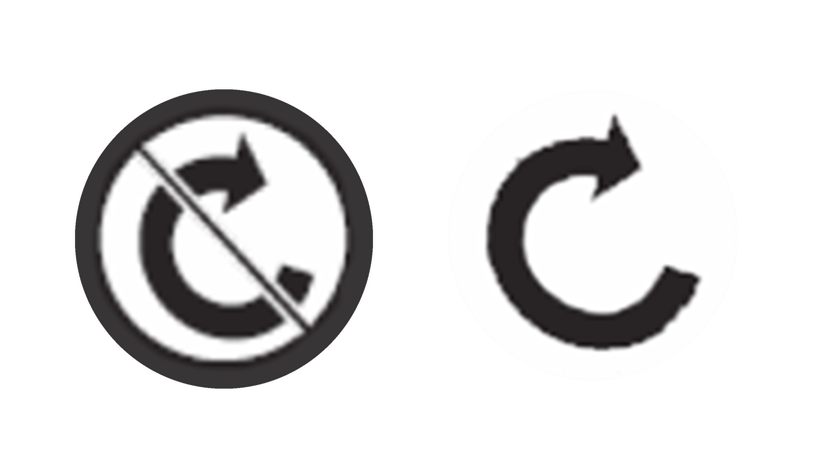
The next thing you’ll notice are warnings and exclusions. In this example, this life jacket is suitable for general boating. However, there are icons with activities and a slash through it. These symbols indicate this life jacket is not suitable for towed sports such as skiing and tubing, nor is it for personal watercraft operation or whitewater paddle sports.

Manufacturer and Certification Information
In the United States and on navigable waterways, a Coast Guard approved life jacket, properly fitted for the intended wearer must be aboard for each occupant. Therefore, knowing your life jacket is approved by the Coast Guard to meet carriage requirements is important. You’ll find this information, as well as testing approval numbers and manufacturer information in this section of the label.
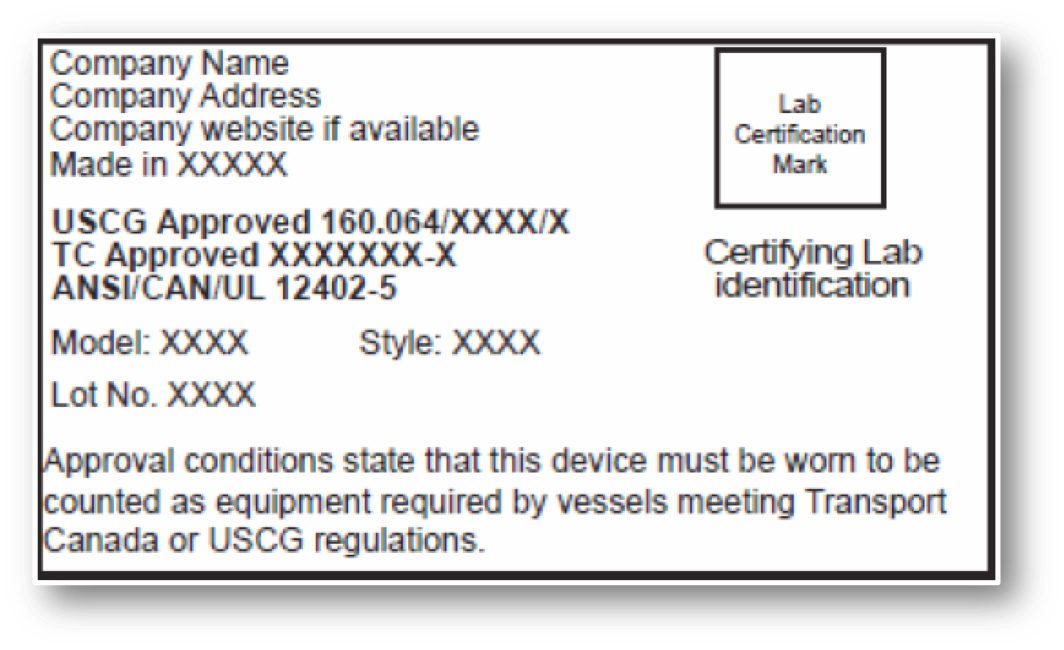
Care and Maintenance Instructions
A life jacket should be viewed as an investment. You should care for it like you would anything else aboard that depends on proper function, with the exception this one could save your life! Your label and manual that came with your life jacket will have general cleaning and care instructions. These icons inform you to hand wash only, and to not use bleach, dry-cleaners, irons, or dryers in your care routine.
Life Jackets - Some Things to Know
- There must be at least one life jacket for each person aboard
- Life jackets must be properly sized for each person aboard
- Children under a certain age are required to wear their life jacket (typically under 13 – see state requirements)
- Participants engaged in certain water sports are required to wear a life jacket (typically skiing and personal watercraft operation – see state requirements)
- Life jackets must be approved by the U.S. Coast Guard in order to meet requirements
- These life jackets must be readily accessible and not in an out-of-reach location or in original packaging
- Any boat 16’ and longer (except canoes and kayaks) must carry a throwable PFD
- Throwable devices must be immediately available for use such as in the cockpit or near the helm
- An inflatable life jacket must be properly armed with an unused gas cylinder
- Inflatable life jackets are authorized for use on recreational boats by a person at least 16 years of age






